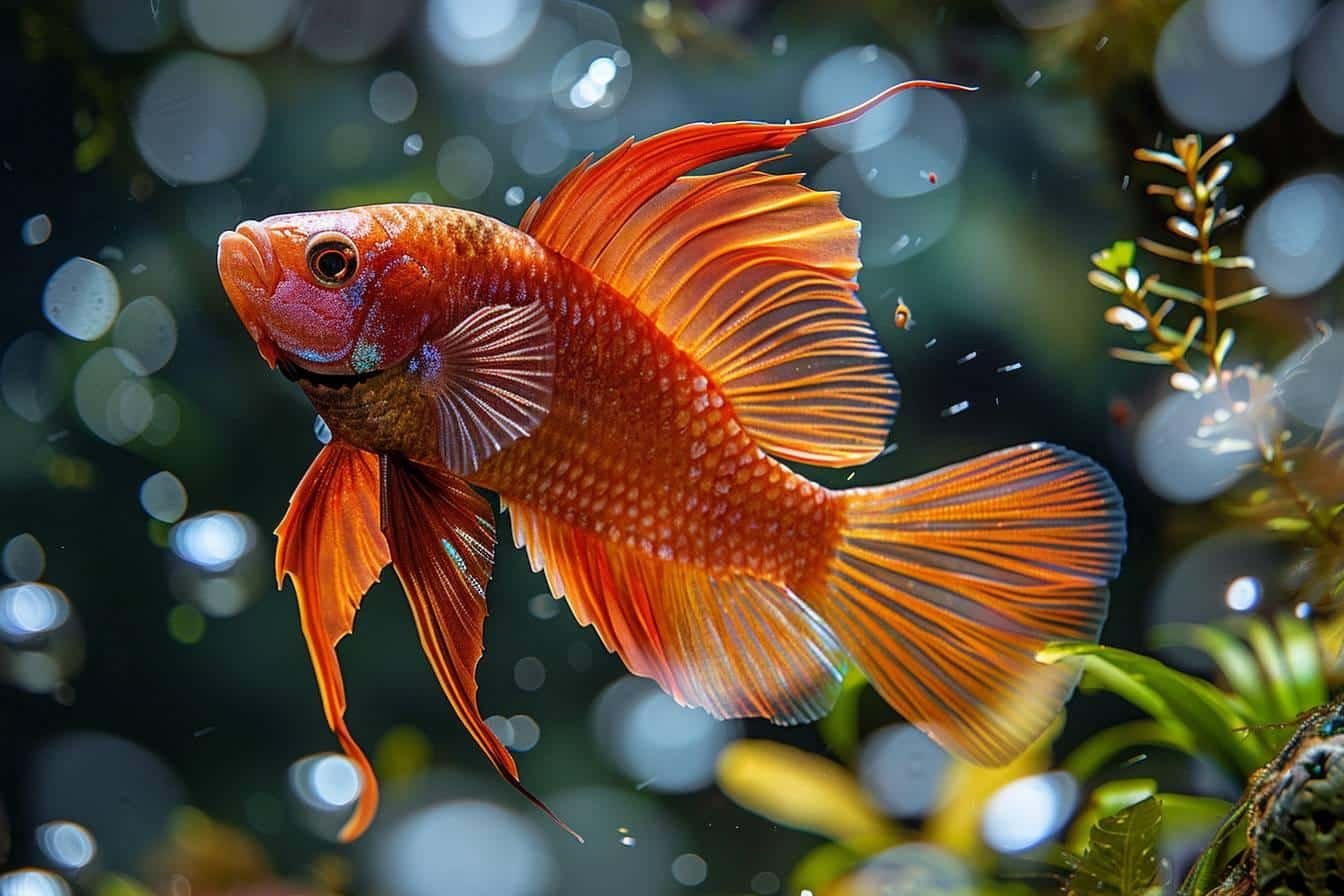The article in brief
Tilapia nilotica, a popular farmed fish, has unique characteristics and a significant global impact. Here are the key points:
- Exceptional adaptability thrives in a variety of environments, from 14 to 33°C
- Efficient reproduction : early sexual maturity and maternal oral incubation
- Versatile breeding various methods, from ponds to recirculating systems
- Major world production 3rd most-produced fish species
- Environmental issues risk of invasive species, search for sustainable practices
Le Tilapia niloticaOreochromis niloticus, also known by its scientific name, is an exciting fish that has conquered aquaculture ponds around the world. As an aquaculture enthusiast, I'm always amazed by the adaptability of this species. Let me take you into the captivating world of this Nile fish, its unique characteristics and the secrets of its successful breeding.
Characteristics and habitat of Nile tilapia
Le Tilapia nilotica is a true champion of adaptation. Originally from the fresh waters of Africa, this fish has conquered many countries thanks to its incredible ability to acclimatise to different environments. I've had the opportunity to observe these fish in a variety of habitats, and I can tell you that they are truly impressive!
Morphology and life cycle
This robust fish can reach a maximum size of 60 cm and weigh up to 4.3 kg. It can live for up to 9-10 years, making it a long-lasting companion for aquaculturists. What has always fascinated me is their precocious sexuality. Just imagine, these little prodigies reach maturity at the age of 3-6 months, at a size of just 10-12 cm!
Housing and living conditions
The Nile tilapia is a true aquatic globetrotter. It can be found in rivers, lakes, irrigation channels and even brackish water. Its preferred temperature range is between 14 and 33°C, enabling it to adapt to a variety of climates. I have personally seen these fish thrive in conditions that other species would find difficult.
Food and behaviour
When it comes to food, the Tilapia nilotica is a vegetarian. It feasts mainly on phytoplankton and benthic algae. It's a bit like the 'grazer' of rivers! This makes it a relatively easy fish to feed in aquaculture, which partly explains its success.
Reproduction and breeding of tilapia nilotica
The reproduction of tilapia is an interesting spectacle that I have been lucky enough to observe on many occasions. It's a well-oiled process that goes a long way to explaining the success of this species in aquaculture.
Single reproductive cycle
The Nile tilapia practices maternal oral incubation, a behaviour that I find particularly touching. Here's how it works:
- The male digs a nest and attracts the female with a courtship display.
- The female lays between 100 and 2,000 eggs.
- After fertilisation, the female collects the eggs in her mouth.
- It incubates them for around a week, protecting them.
This cycle can be repeated several times a year, which explains the rapid proliferation of the species.
Modern breeding techniques
Breeding Tilapia nilotica is an exciting and constantly evolving field. Here is an overview of the main methods used:
| Breeding method | Benefits | Disadvantages |
|---|---|---|
| Ponds | Low cost, natural | Limited yield |
| Floating cages | High density, easy to manage | Risk of pollution |
| Recirculation systems | Total control, intensive production | High cost, technical expertise required |
An interesting feature of tilapia farming is the preference for monosex male populations. Why is this? Quite simply because males grow faster. Did you know that a tilapia can grow to 450g in just 6 months? That's impressive!
A common, albeit controversial, technique is hormonal sex reversal practised on fry. This method produces almost exclusively male populations. However, more natural alternatives are being developed, such as the use of pronutrients.

The global impact of tilapia nilotica
The success of Tilapia nilotica extends well beyond the borders of its native Africa. This fish has become a major player in global aquaculture, with significant economic and ecological implications.
Global production and consumption
As a pet shop floor manager, I'm always impressed by the production figures for tilapia. Did you know that it is the third most produced fish species in the world? In 2018, global production reached 4.5 million tonnes, and the trend is still rising.
The main producing countries are :
- China, the undisputed leader
- Indonesia
- Egypt, the historic birthplace of Nile tilapia
This massive production has democratised fish consumption in many countries, contributing to global food security.
Environmental issues
Despite its many advantages, intensive tilapia farming raises environmental issues. In some countries, the Tilapia nilotica is considered to be an invasive species. Its exceptional ability to adapt can sometimes disrupt local ecosystems.
This is why research is increasingly turning towards sustainable farming practices. For example, the use of pronutrients as alternatives to antibiotics is a promising avenue. These natural additives boost fish health while limiting the impact on the environment.
Speaking of exciting species, if you're interested in other aquatic wonders, I recommend you take a look at the blue neon, this little aquatic jewel. It's a fish that brings a touch of colour and life to any aquarium!
Future prospects for Nile tilapia
The future of Tilapia nilotica looks promising, but not without its challenges. As an aquaculture enthusiast, I am convinced that this species will continue to play a crucial role in the world's food supply.
Ongoing research is aimed at further improving farming techniques, with an emphasis on sustainability and animal welfare. The aim is to strike a balance between intensive production and respect for the environment.
Who knows? Maybe in a few years' time we'll have aquaponic tilapia farms in our cities, providing both fresh fish and vegetables grown using the nutrients produced by the fish. It's a dream of mine, and who knows, maybe it will come true!
Ultimately, the Tilapia nilotica is much more than just a farmed fish. It is a symbol of human ingenuity in aquaculture, and a hope for feeding a growing world population. So the next time you enjoy a tilapia fillet, think of the captivating story behind this extraordinary fish!
Sources :
